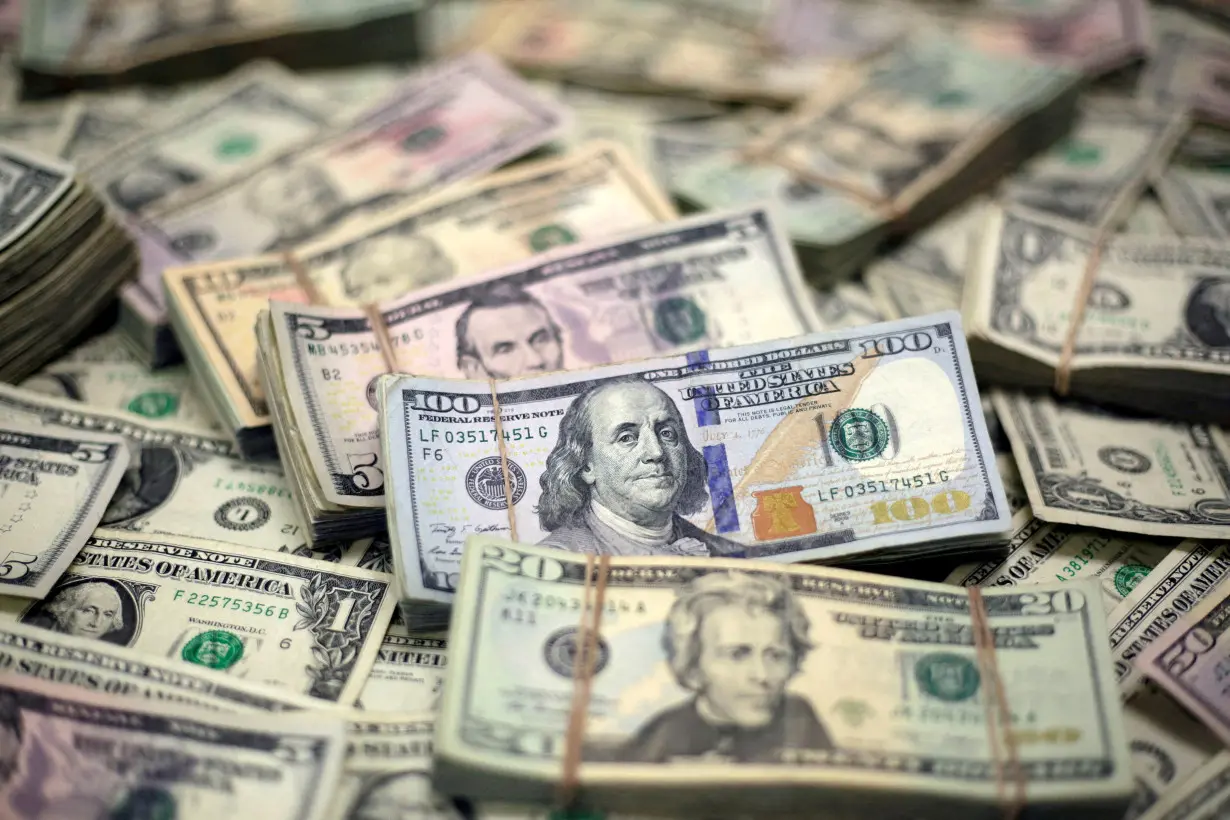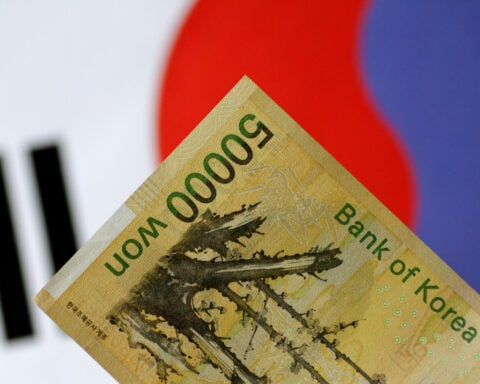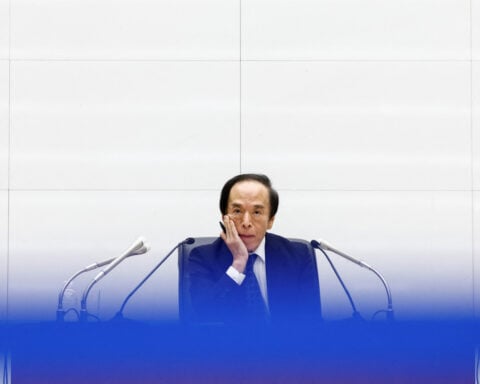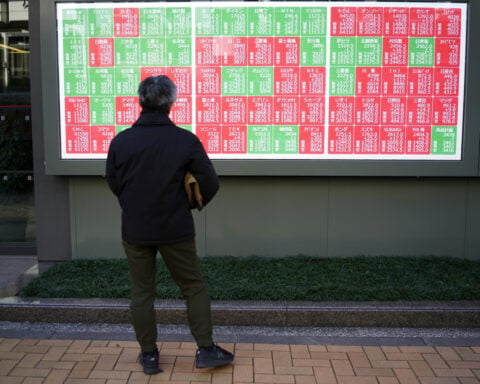By Saqib Iqbal Ahmed
NEW YORK, Sep 5 (Reuters) -The U.S. dollar's decline is gaining speed as anticipated interest rate cuts by the Federal Reserve threaten to end the greenback's years-long period of strength.
The dollar has fallen 5% from its 2024 highs, close to its lowest level in about a year against a basket of its peers following a sharp drop last month.
The reason is an imminent drop in U.S. interest rates. For years, a robust U.S. economy and persistent inflation kept rates far above those of other developed countries, making dollar-based assets more attractive and keeping it elevated even after the currency hit a two-decade high in 2022.
That yield advantage is set to diminish now that inflation has cooled and Fed Chairman Jerome Powell said last month the "time has come" to start cutting rates, a process expected to kick off at the central bank's Sept. 17-18 monetary policy meeting.
"We've always had the view that almost regardless of other circumstances, once the Fed starts cutting rates, that the dollar would lose ground," said Brian Rose, senior U.S. economist at UBS Global Wealth Management. "We still have that view."
Getting the dollar's trajectory right is important for investors due to the currency's central role in global finance. A weaker dollar could make U.S. exporters' products more competitive abroad and lower costs for multinational companies converting foreign profits into greenbacks.
How much further the dollar falls over the long term could depend on how deeply the Fed cuts rates in the months ahead, and how quickly other global banks follow suit.
For now, the U.S. economy appears stronger than many of its peers. The yield gap between 10-year Treasuries and equivalent German bunds - recently around 160 basis points - has shrunk in recent months but remains around its five-year average of 167 basis points.
Investors, however, are betting on big rate cuts ahead. Futures tied to the Fed's key policy rate show traders pricing in around 100 basis points of cuts this year, compared to about 60 basis points for the European Central Bank.
Commodity Futures Trading Commission data tracking positioning by hedge fund and other speculative investors showed bets on the dollar swung net short to the tune of $8.83 billion for the week ended Aug. 27, the first bearish position in about six months. That compares to a net long of $32.6 billion in May.
"The recent dovish tone from Powell suggests more cuts than initially expected," said Aaron Hurd, senior portfolio manager, currency, at State Street Global Advisors, who has recently reduced tactical bullish positions on the dollar.
The U.S. government's August jobs report, due on Sept. 6, may offer clues on any further deterioration in what many policymakers have called a still-healthy job market.
SLOW DECLINE?
Several factors could prevent a deeper dollar decline, at least in the shorter term. August's sell-off, during which the dollar index lost 2.2%, has led some strategists to conclude the U.S. currency may have fallen too quickly.
"While the Fed's long-telegraphed move in September does spell some dollar weakness in the fourth quarter, this recent move we've seen is a bit of an overreaction," said Helen Given, associate director of trading at Monex USA.
Monex USA nevertheless sees the euro at $1.13 by June 2025, implying a drop of about 2% against the dollar. Rose, of UBS, has a similar target for the currency pair.
Many are awaiting more evidence of a U.S. economic slowdown before turning more negative on the dollar.
"The economy is slowing but it's still in a very healthy place," said Thanos Bardas, co-head of global investment-grade fixed income at Neuberger Berman.
Investors also believe the winner of the U.S. presidential election in November could influence the currency's fortunes. The latest polls show the leading candidates, Republican Donald Trump and Vice President Kamala Harris, a Democrat, in a tight race.
Trump has railed against the currency's strength, saying it hurts U.S. competitiveness. Yet many of his policies, such as tariffs and tax cuts, could strengthen the dollar, said Bardas.
On Thursday, Trump told the Economic Club of New York that "we have to continue to have (the dollar) be the world currency," in response to a question about his use of economic sanctions.
"We cannot lose our dollar standard, very important," he said.
Steven Englander, head of global G10 FX research at Standard Chartered, wrote late last month that a Harris win could bring higher taxes and more pressure on the Fed to ease if economic activity slows.
In the end, the market's reaction to lower U.S. rates is the likely factor that determines the dollar's course, said Kit Juckes, FX strategist at Societe Generale.
Strong growth has provided the U.S. with an "insatiable appetite for foreign investment, matched with enthusiastic yield-hunting foreign investors," he wrote. "Now that growth is slowing and rates are coming down, we'll see how it plays out."
(Reporting by Saqib Iqbal Ahmed; Additional reporting by Lananh Nguyen; Editing by Ira Iosebashvili, Richard Chang and Sonali Paul)

 Biden promised to turn the page on Trump. Now he's being replaced by him
Biden promised to turn the page on Trump. Now he's being replaced by him
 Firefighters prepare for increasing gusts following brief reprieve for LA area
Firefighters prepare for increasing gusts following brief reprieve for LA area
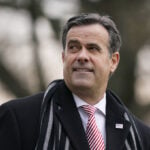 John Ratcliffe, tapped by Trump to lead the CIA, will face questioning in the Senate
John Ratcliffe, tapped by Trump to lead the CIA, will face questioning in the Senate
 Nippon Steel wants to work with Trump administration on US Steel deal, Mori tells WSJ
Nippon Steel wants to work with Trump administration on US Steel deal, Mori tells WSJ
 After cable damage, Taiwan to step up surveillance of flag of convenience ships
After cable damage, Taiwan to step up surveillance of flag of convenience ships
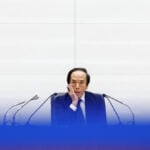 BOJ will raise rates if economy, price conditions continue to improve, Ueda says
BOJ will raise rates if economy, price conditions continue to improve, Ueda says
 Manatees congregate in warm waters near power plants as US winter storms graze Florida
Manatees congregate in warm waters near power plants as US winter storms graze Florida
 AAPI adults prioritize immigration, but split on mass deportations: AP-NORC/AAPI Data poll
AAPI adults prioritize immigration, but split on mass deportations: AP-NORC/AAPI Data poll
 As Los Angeles burns, Hollywood's Oscar season turns into a pledge drive
As Los Angeles burns, Hollywood's Oscar season turns into a pledge drive
 As fires ravage Los Angeles, Tiger Woods isn't sure what will happen with Riviera tournament
As fires ravage Los Angeles, Tiger Woods isn't sure what will happen with Riviera tournament
 Antetokounmpo gets 50th career triple-double as Bucks win 130-115 to end Kings' 7-game win streak
Antetokounmpo gets 50th career triple-double as Bucks win 130-115 to end Kings' 7-game win streak
